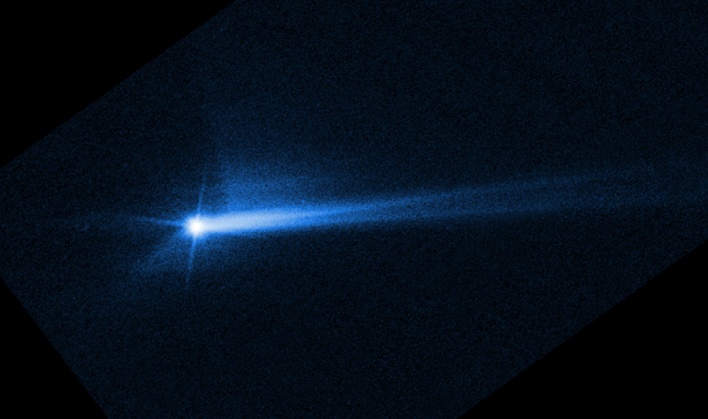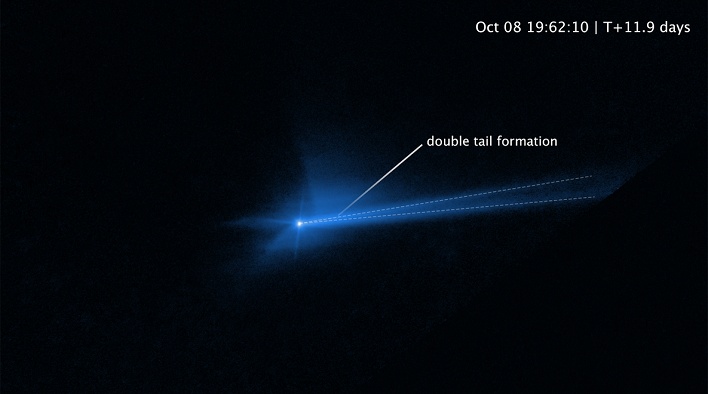Watch NASA’s DART Earth Defense System Slam Into An Asteroid In Smashing Success

NASA has now shared a time-lapse movie of the aftermath as captured by the Hubble Space Telescope. The movie has given new insights into how the debris was distributed into a complex pattern in the days following the historic impact. Hubble's viewpoint gave a much broader scope of data than the LICIACube cubesat could, which flew past Dimorphos just minutes after the impact.
The collection of images used to make the movie begins about 1.3 hours before impact. Didymos and Dimorphos are seen within the central bright spot, as Hubble was unable to resolve the two asteroids separately. The thin straight spikes that can be seen projecting away from the center are artifacts of Hubble's optics, according to a NASA blog post.
About 2 hours following the impact, debris can be seen flying away from the asteroid. The dust and rock were moving at speeds faster than four miles per hour, which is fast enough for it to escape the asteroid's gravitational pull. The result is a "largely hollow cone with long, stringy filaments."
At around 17 hours post-impact the debris pattern entered into a second stage, which Li at first thought to be a smear on the image. It is at this time the dynamic interaction within the binary system causes the cone shape of the ejecta pattern to become distorted. NASA remarked, "The most prominent structures are rotating, pinwheel-shaped features." These pinwheels are a result of the gravitational pull of the companion asteroid, Didymos.

Hubble image showing double tail formation following DART impact of Dimorphos
The images of the DART mission from Hubble have spurred new research papers from astronomers, which have been published in the journal Nature. That research will surely continue, as data and images from other telescopes, such as the James Webb Space Telescope and Lucy spacecraft, continue to be looked at concerning the DART impact and its aftermath.

